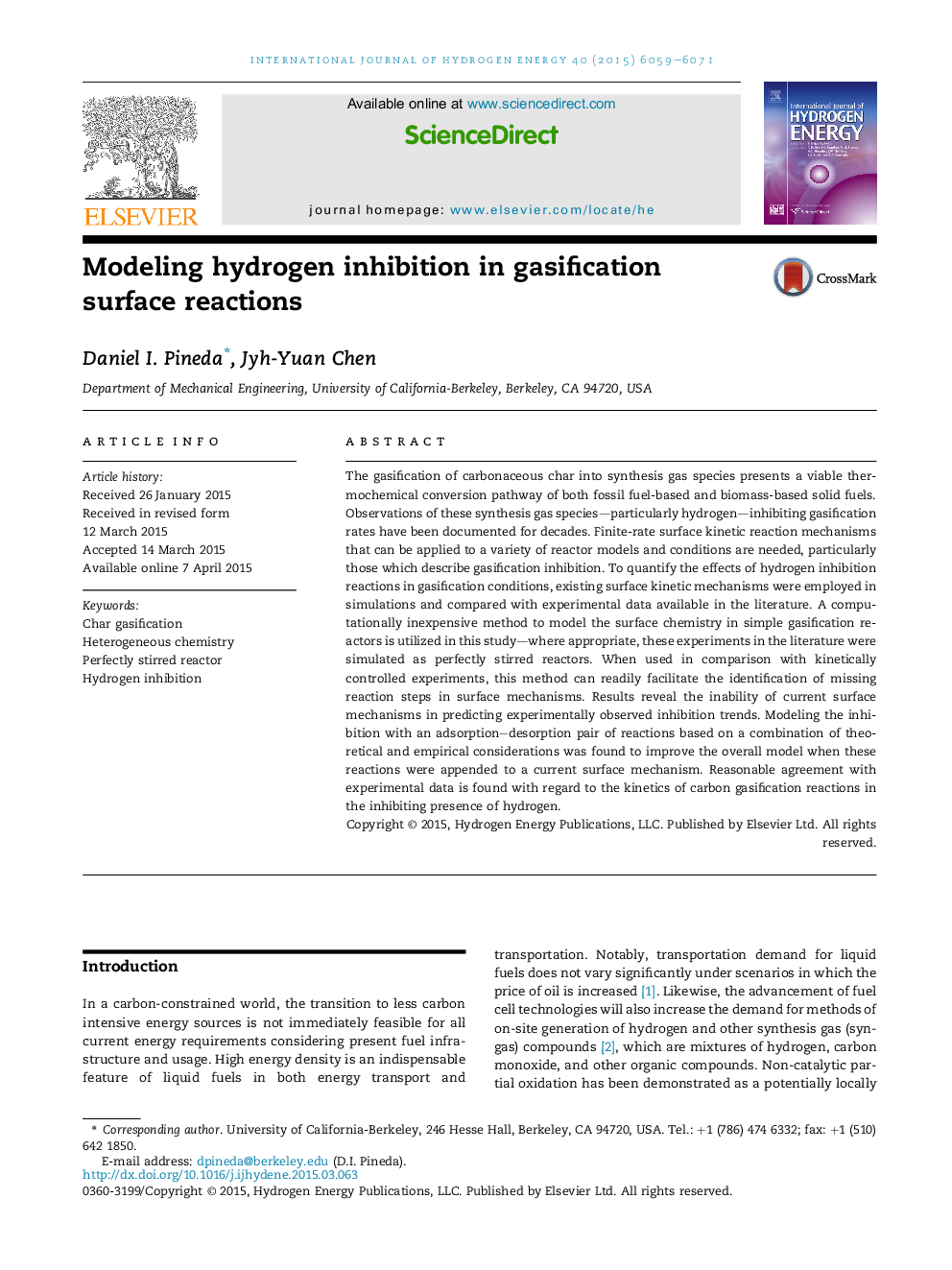| Article ID | Journal | Published Year | Pages | File Type |
|---|---|---|---|---|
| 7715624 | International Journal of Hydrogen Energy | 2015 | 13 Pages |
Abstract
The gasification of carbonaceous char into synthesis gas species presents a viable thermochemical conversion pathway of both fossil fuel-based and biomass-based solid fuels. Observations of these synthesis gas species-particularly hydrogen-inhibiting gasification rates have been documented for decades. Finite-rate surface kinetic reaction mechanisms that can be applied to a variety of reactor models and conditions are needed, particularly those which describe gasification inhibition. To quantify the effects of hydrogen inhibition reactions in gasification conditions, existing surface kinetic mechanisms were employed in simulations and compared with experimental data available in the literature. A computationally inexpensive method to model the surface chemistry in simple gasification reactors is utilized in this study-where appropriate, these experiments in the literature were simulated as perfectly stirred reactors. When used in comparison with kinetically controlled experiments, this method can readily facilitate the identification of missing reaction steps in surface mechanisms. Results reveal the inability of current surface mechanisms in predicting experimentally observed inhibition trends. Modeling the inhibition with an adsorption-desorption pair of reactions based on a combination of theoretical and empirical considerations was found to improve the overall model when these reactions were appended to a current surface mechanism. Reasonable agreement with experimental data is found with regard to the kinetics of carbon gasification reactions in the inhibiting presence of hydrogen.
Related Topics
Physical Sciences and Engineering
Chemistry
Electrochemistry
Authors
Daniel I. Pineda, Jyh-Yuan Chen,
